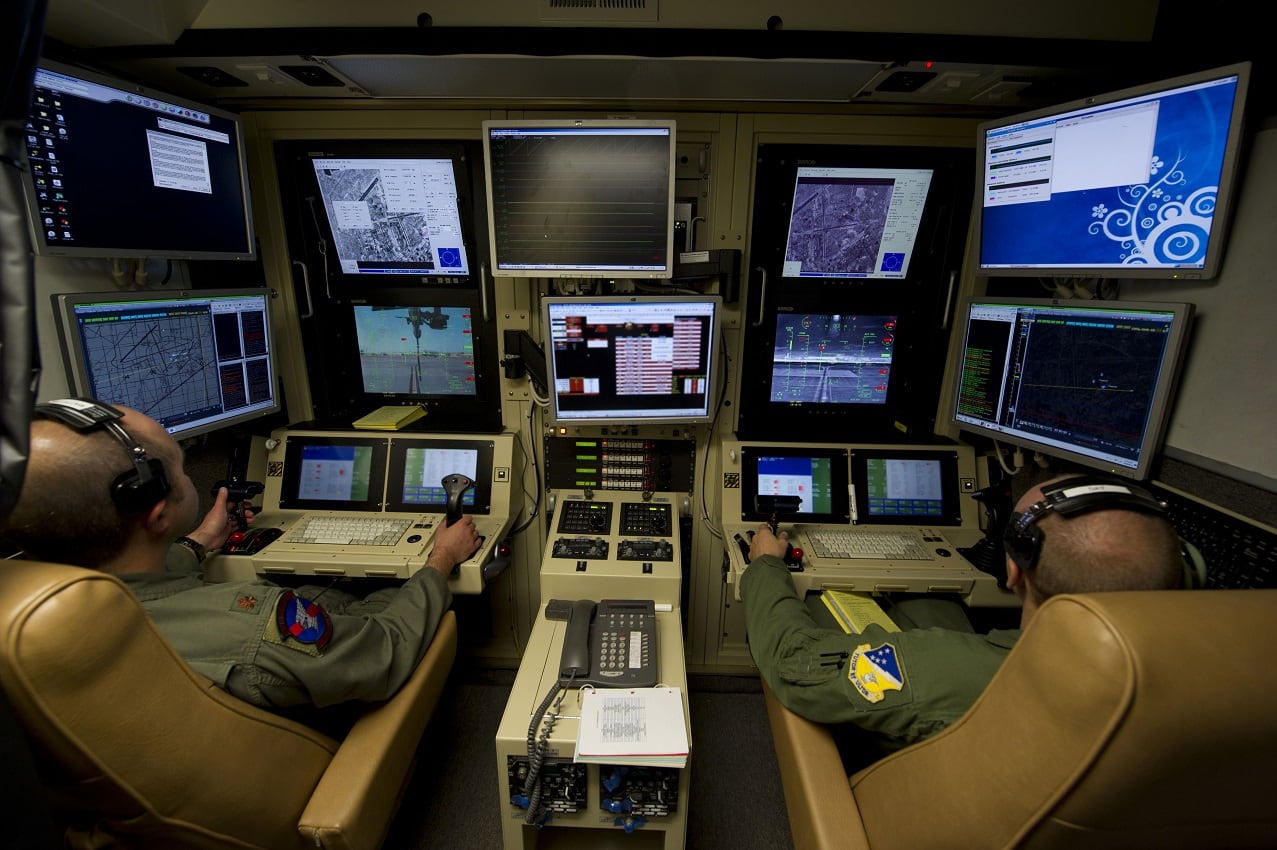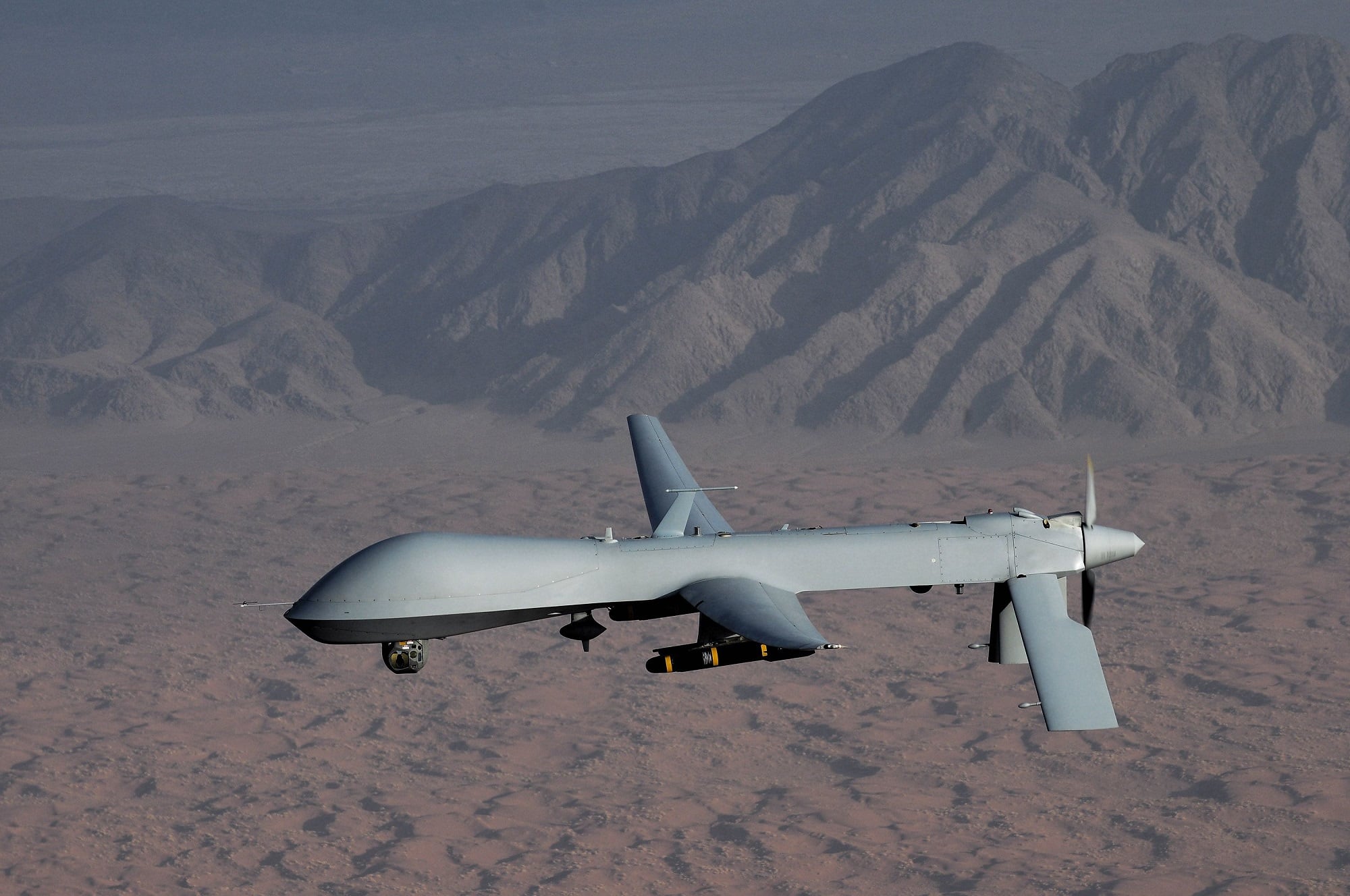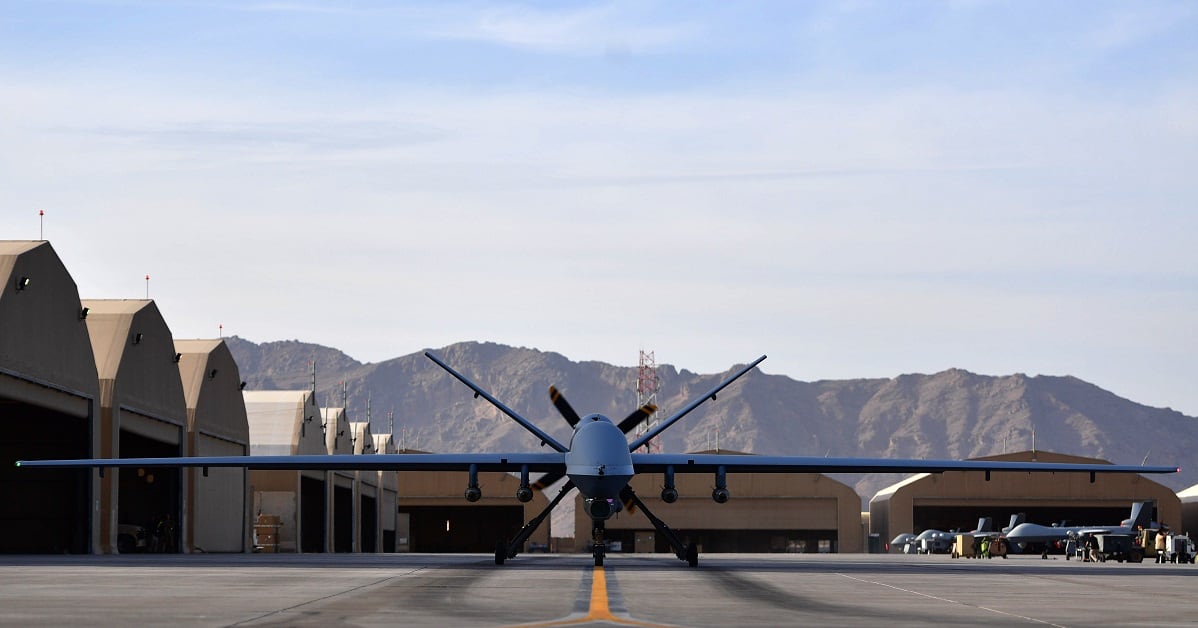The MQ-9 Reaper has big shoes to fill.
Following the announcement that the much older MQ-1 Predator will be retired in March, the Reaper has been flexed to “a new approach,” according to a Monday announcement by U.S. Air Forces Central Command.
“[Reapers] are being tasked in a multi-role capacity, to include executing deliberate strikes, armed overwatch or close-air support missions, and then flexing to an ISR tasking — all in a single mission,” AFCENT said.
The Air Force command heralded this approach as a way to offer planners greater flexibility in choosing their optimal strike platform. This includes “a variety of manned and unmanned aircraft supporting operations, including, but not limited to, F-16s, B-52s, A-10s and MQ-9s.”
The new, multi-faceted tasking scheme was announced after the successful deployment of four 500-pound precision guided munitions from a single Reaper, “effectively destroying a Taliban narcotics facility in Helmand province, Afghanistan, Feb. 22,” according to AFCENT.

On Feb. 14, Creech Air Force Base in Nevada foreshadowed the change as well, announcing that the Air Force will shift entirely to MQ-9 Reapers for UAV combat missions after the Predator’s sunset. The Air Force also flies unarmed RQ-4 Global Hawks for reconnaissance missions.
First Lt. Annabel Monroe, a spokeswoman for Air Combat Command, said that while the active-duty Air Force and Air National Guard will stop flying the MQ-1 after March 9, contractors flying the older platform in the Middle East will continue through December.
RELATED

The Air Force first introduced the MQ-9 Reaper in 2006 as the Predator’s planned successor. The MQ-9 can fly faster, climb higher and is optimized for combat with more weapons capacity, according to officials at Creech.
Given the Reaper’s significant loiter time, its wide-range sensors, multi-mode communications suite and precision weapons — “it provides a unique capability to perform strike, coordination and reconnaissance against high-value, fleeting, and time-sensitive targets,” according to the Air Force.
Kyle Rempfer was an editor and reporter who has covered combat operations, criminal cases, foreign military assistance and training accidents. Before entering journalism, Kyle served in U.S. Air Force Special Tactics and deployed in 2014 to Paktika Province, Afghanistan, and Baghdad, Iraq.





